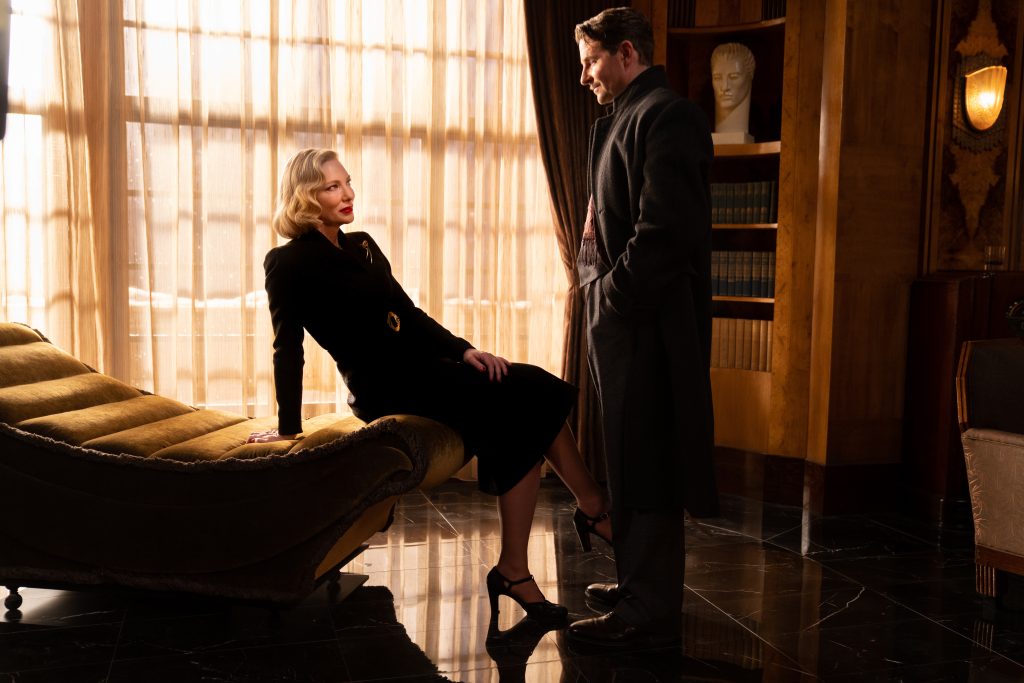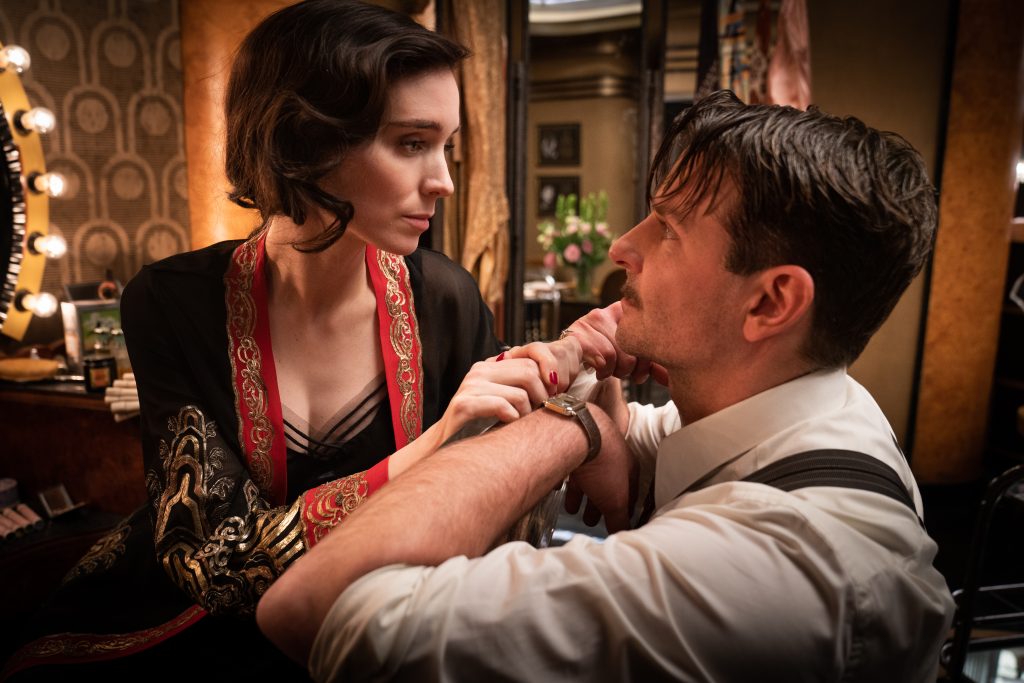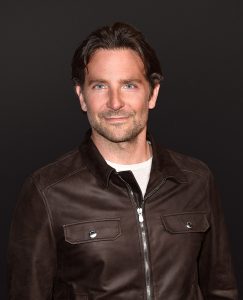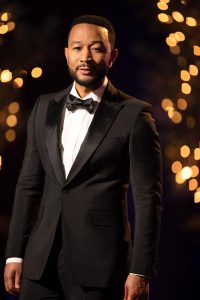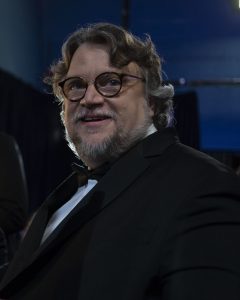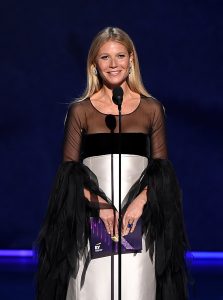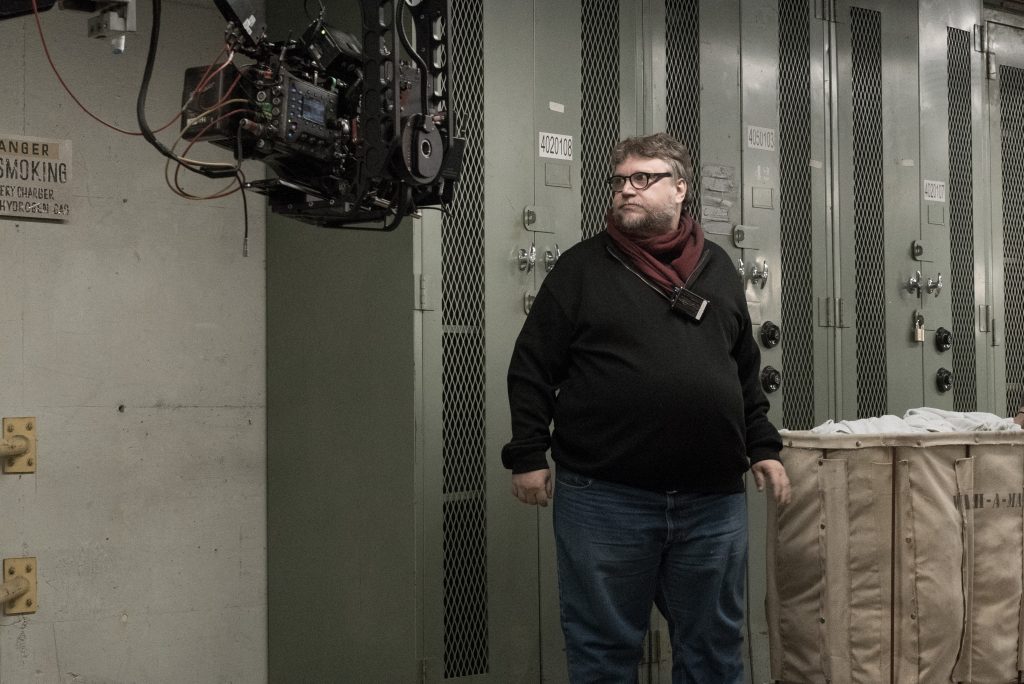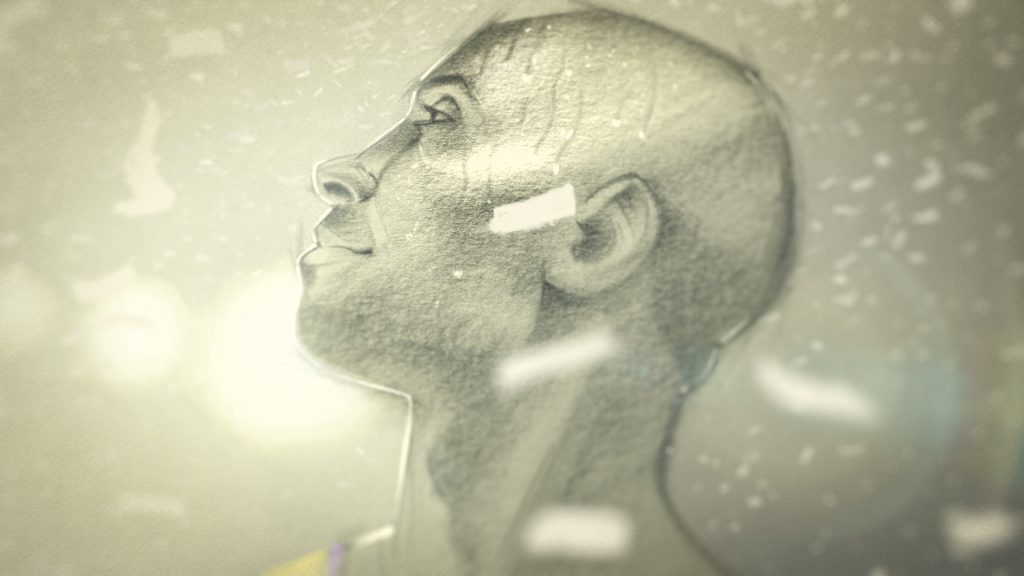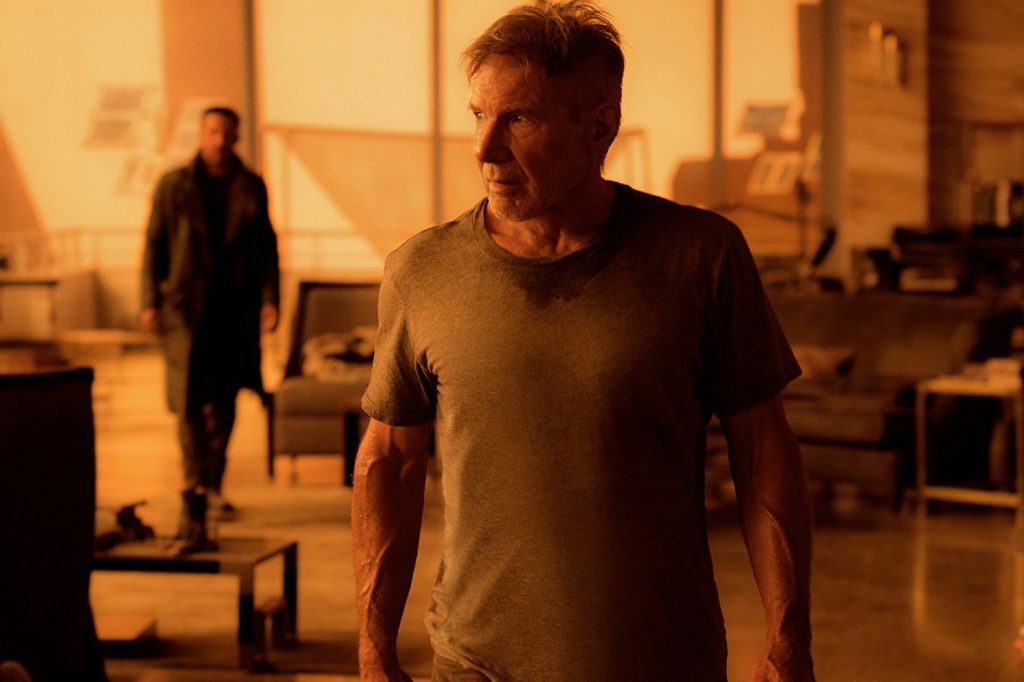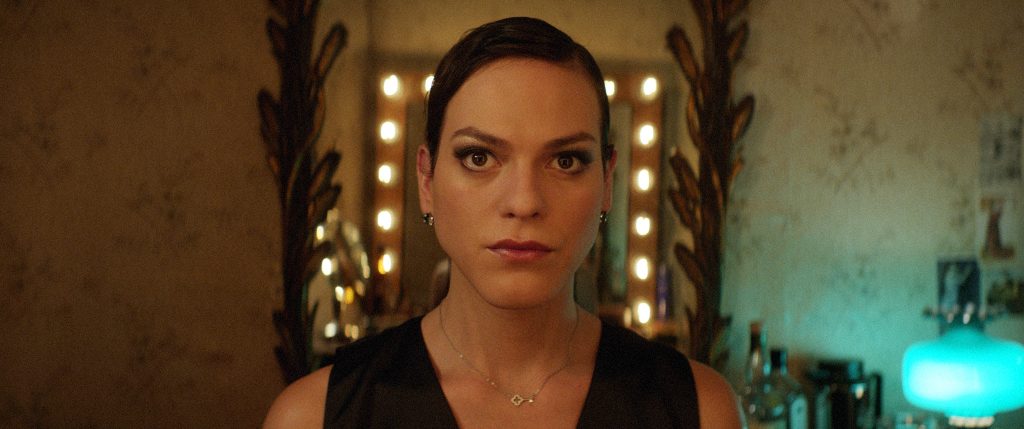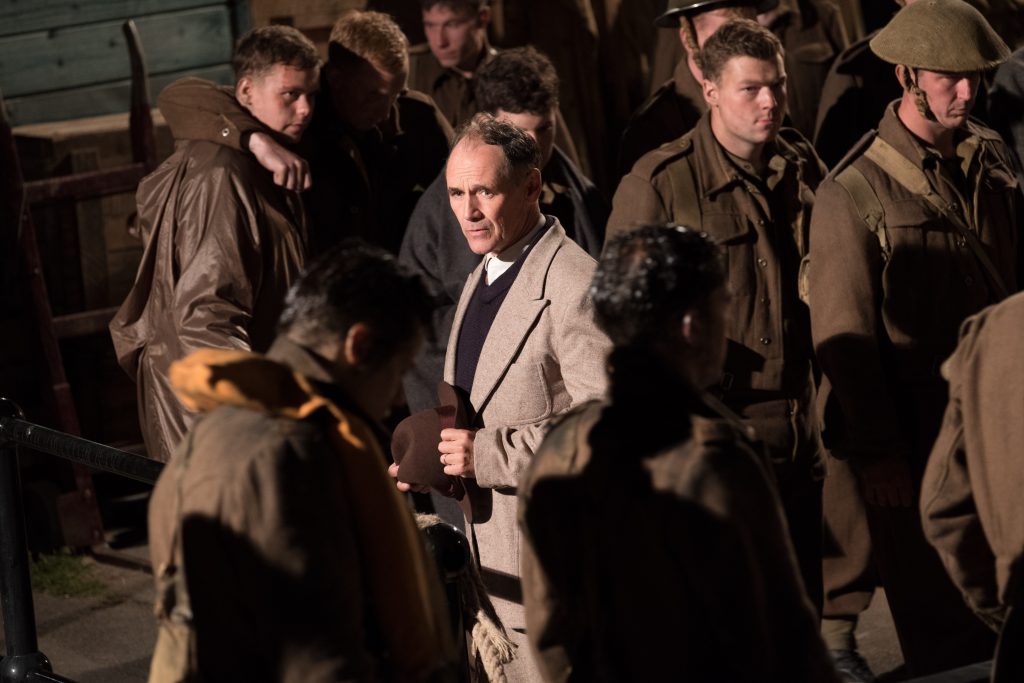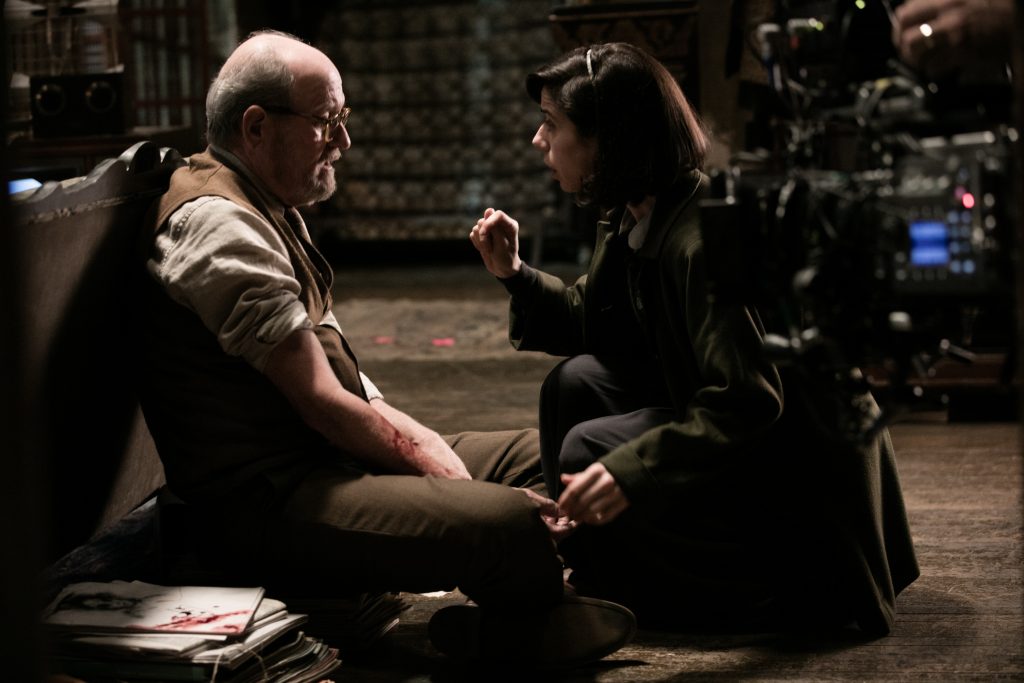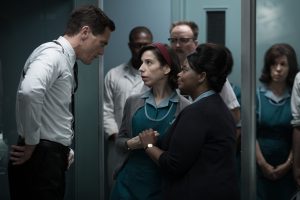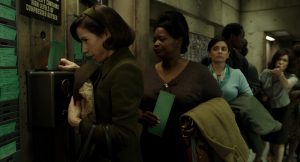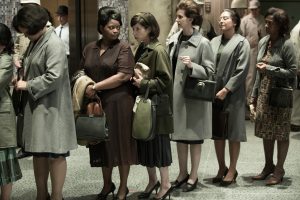December 6, 2022
by Carla Hay

“Guillermo del Toro’s Pinocchio”
Directed by Guillermo del Toro and Mark Gustafson
Culture Representation: Taking place in World War II-era Italy in the 1940s (and briefly in 1916), the animated film “Guillermo del Toro’s Pinocchio” features cast of human characters (all white Italians) and magical creatures representing the working-class and middle-class.
Culture Clash: An elderly wood carver/carpenter makes a puppet boy that comes alive and then goes on a quest to become a human being.
Culture Audience: “Pinocchio” will appeal primarily to people who are fans of filmmaker Guillermo del Toro and the original 1940 “Pinocchio” movie and are interested in seeing a unique retelling of this classic story.

“Guillermo del Toro’s Pinocchio” is a stellar example of how to do a highly creative movie remake that maintains the spirit of the original while making imaginative revisions. It’s destined to be a classic in stop-motion animation. The movie takes a while to get to the action-adventure part of the story, so be prepared for a lot of very talkative scenes in the first half of the film. “Guillermo del Toro’s Pinocchio” is such a visual treat that lets viewers get to know the characters in a meaningful way, the leisurely pace in the movie’s first half is not too much of a detriment to the film overall.
Oscar-winning filmmaker del Toro had been trying to make a stop-motion animation version of “Pinocchio” since 2002, when the Jim Henson Company acquired the rights to make Carlo Collodi’s 1883 children’s fairy tale “The Adventures of Pinocchio.” “Guillermo del Toro’s Pinocchio” (whose animation is inspired by illustrator Gris Grimly’s interpretation of Pinocchio) is directed by del Toro and Mark Gustafson, with the movie’s adapted screenplay written by del Toro and Patrick McHale. The book was famously made into Disney’s 1940 musical animated film “Pinocchio.” “Guillermo del Toro’s Pinocchio” keeps the gist of the story (an Italian wooden puppet named Pinocchio that wants to become a human boy) and brings it into the 20th century.
It’s not a political movie or a preachy film, but “Guillermo del Toro’s Pinocchio” is primarily set during World War II, when Italy was under the fascist regime of Benito Mussolini. A such, “Guillermo del Toro’s Pinocchio” has themes about the horrors of war and how people can become puppets under an oppressive government. The movie keeps the original story’s meaningful messages about family love, coping with death and self-acceptance. There are touches of comedy in “Guillermo del Toro’s Pinocchio,” but people should not expect a perky musical. The movie’s overall tone is dramatic.
“Guillermo del Toro’s Pinocchio” begins with a flashback to 1916, in an unnamed part of Italy, where a kind and amiable wood carver/carpenter named Geppetto (voiced by David Bradley) lives happily with his son Carlo (voiced by Gregory Mann), who’s 10 years old. Geppetto is a single parent. Carlo’s mother is not seen or mentioned in the movie. The movie’s intermittent narrator is a nomadic cricket named Sebastian J. Cricket (voiced by Ewan McGregor), who has settled in Geppetto’s home workshop to write a memoir about his extensive travels.
One day, Carlo finds a pine cone and gives it to Geppetto so that Geppetto can plant the pine cone, with the expectation that it will grow into a tree. Carlo gives this gift to Geppetto on the day that he accompanies Geppetto to a carpenter job at the local church, where Geppetto is restoring a giant statue of Jesus Christ on a crucifix. Suddenly, military airplanes appear in the sky, and a bomb is dropped on the church. Geppetto escapes, but Carlo is killed instantly.
About 25 years later, Geppetto is a very lonely elderly man, who is still grieving heavily over the death of Carlo. He sometimes gets drunk to try to cope with his emotional pain. The pine cone that Carlo gave to him all those years ago has now grown into a pine tree. In a drunken rage, Carlo cuts down the tree and makes a wooden boy puppet out of the tree, as a tribute to Carlo. Sebastian observes it all.
One night, the benevolent Wood Sprite (voiced by Tilda Swinton) visits the workshop, and finds out from Sebastian that the puppet was made so that Geppetto wouldn’t be lonely and to remind Gepetto of his son Carlo. (The Wood Sprite is called the Blue Fairy in other versions of “Pinocchio.”) The Wood Sprite brings the boy puppet to life, and names the puppet Pinocchio (also voiced by Mann), while Sebastian witnesses this magical spell. The Wood Sprite calls herself a “guardian” on Earth. She tells Sebastian: “I care for little things, the forgotten things, the lost ones.” And she asks Sebastian to help her look after Pinocchio.
At first, Geppetto is frightened by the sight of Pinocchio being alive, but he eventually loves Pinocchio like a son. One day, Pinocchio follows Geppetto to church, where the parishioners treat Pinocchio with fear and suspicion. The churchgoers think that this talking puppet is demonic, but Geppetto assures them that Pinocchio is just a puppet. Still, Pinocchio is treated like an outcast in the village from then onwards.
The church’s priest (voiced by Burn Gorman) and the village’s podesta (voiced by Ron Perlman), who represent the village’s top authority figures, order Geppetto to send Pinocchio to school, so that Pinocchio can learn the rules and laws of this Italian society. Viewers will have to overlook that most of the main characters have British accents in the English-language version of this movie. Because most of movie’s voice actors do not have Italian accents, it’s one of the few details that “Guillermo del Toro’s Pinocchio” gets wrong, but most viewers won’t notice or care.
The very stern podesta has a son named Candlewick (voiced by Finn Wolfhard), who often lives in fear of his domineering father and tries hard to please his father. The podesta is quick to judge others harshly and is eager to dole out punishment to anyone he thinks doesn’t follow his orders. Candlewick and Pinocchio are around the same age, in terms of emotional maturity level, and their relationship at first consists of Candlewick being a bully to naïve Pinocchio.
For example, Candlewick plays a mean-spirited prank on Pinocchio by suggesting that Pinocchio move closer to a fire to get warmer. As a result, Pinocchio’s legs get partially burned off, but Geppetto compassionately makes new and improved legs for Pinocchio. Candlewick and Pinocchio eventually become friends in a poignant storyline where they find out they have more in common than Candlewick thought. Pinocchio also wants to please Geppetto like a dutiful son. These father-son issues are recurring themes in the movie’s story.
Pinocchio doesn’t go to school as planned, and he ends up being lured into working at a carnival as the star act. The carnival is led by greedy and unscrupulous Count Volpe (voiced by Christoph Waltz), who is cruel and abusive to his loyal and sweet-natured monkey Spazzatura (voiced by Cate Blanchett). The rest of “Guillermo del Toro’s Pinocchio” has faithful renditions of the original story while adding very different new plotlines to the movie.
Sebastian the cricket (who is a purple instead of the traditional green) is not an ever-present sidekick with Pinocchio. In this movie, Pinocchio actually spends more time with Candlewick. “Guillermo del Toro’s Pinocchio” also has a character called Death (also voiced by Swinton), who is the sister of the Wood Sprite. Both sisters are blue magical creatures that talk without moving their mouths. The character of Death has a lot to do with some of the main changes to the story.
There are some pleasant original songs performed in “Guillermo del Toro’s Pinocchio,” but none that will become iconic such as “When You Wish Upon a Star” from Disney’s 1940 version of “Pinocchio.” Alexandre Desplat, who wrote the terrific musical score for “Guillermo del Toro’s Pinocchio,” collaborated with Roeban Katz on the movie’s original songs “My Son” (performed by Bradley) and the Mann-performed “Fatherland March,” “Big Baby Il Duce March” and “Ciao Papa.” It certainly would have been easier (and lazier) to try to replicate the Disney songs from 1940’s “Pinocchio,” so the filmmakers of “Guillermo del Toro’s Pinocchio” deserve some credit for not relying on the same old type of tunes.
The voice cast in “Guillermo del Toro’s Pinocchio” is top-notch and delivers the expected emotions on a very entertaining level. John Turturro has a supporting role as a doctor, while Tim Blake Nelson voices the four Black Rabbits that encounter Pinocchio. Mann’s high-pitched British voice is perfectly fine, but might be a little bit of a distraction for people who think Pinocchio should’ve sounded more Italian or southern European in this movie.
Waltz has played many villainous characters, so his interpretation of Count Volpe has the expected amount of sleaze and smarminess. Blanchett’s voice work is the biggest surprise because many people would never guess she’s the wordless voice of a monkey in this movie. McGregor’s distinctive voice seems underused, since the cricket character isn’t as prominently featured in “Guillermo del Toro’s Pinocchio,” compared to other “Pinocchio” movies. However, Sebastian gets a big scene in “Guillermo del Toro’s Pinocchio” where his strong-willed and opinionated personality is expressed in full force when scolding Geppetto for not appreciating Pinocchio.
As for the movie’s visuals, the animation is striking, gorgeous and often emotionally rousing. It is stop-motion animation that represents the best of what could be done creatively and technically when this movie was made. The ending of “Guillermo del Toro’s Pinocchio” is a major departure from the original book and 1940’s “Pinocchio,” but the conclusion is handled in a way that’s of a much higher quality than Disney’s inferior 2022 remake of “Pinocchio.”
Fantasy films of del Toro often walk the line between whimsy and melancholy in telling stories of life and death. “Guillermo del Toro’s Pinocchio” is no different and is, without question, one of del Toro’s most impressive movies. Some people looking for more action sequences in this movie might be disappointed, but “Guillermo del Toro’s Pinocchio” has much more to offer than being a superficial joy ride.
Netflix released “Guillermo del Toro’s Pinocchio” in select U.S. cinemas on November 9, 2022. The movie will premiere on Netflix on December 9, 2022.

